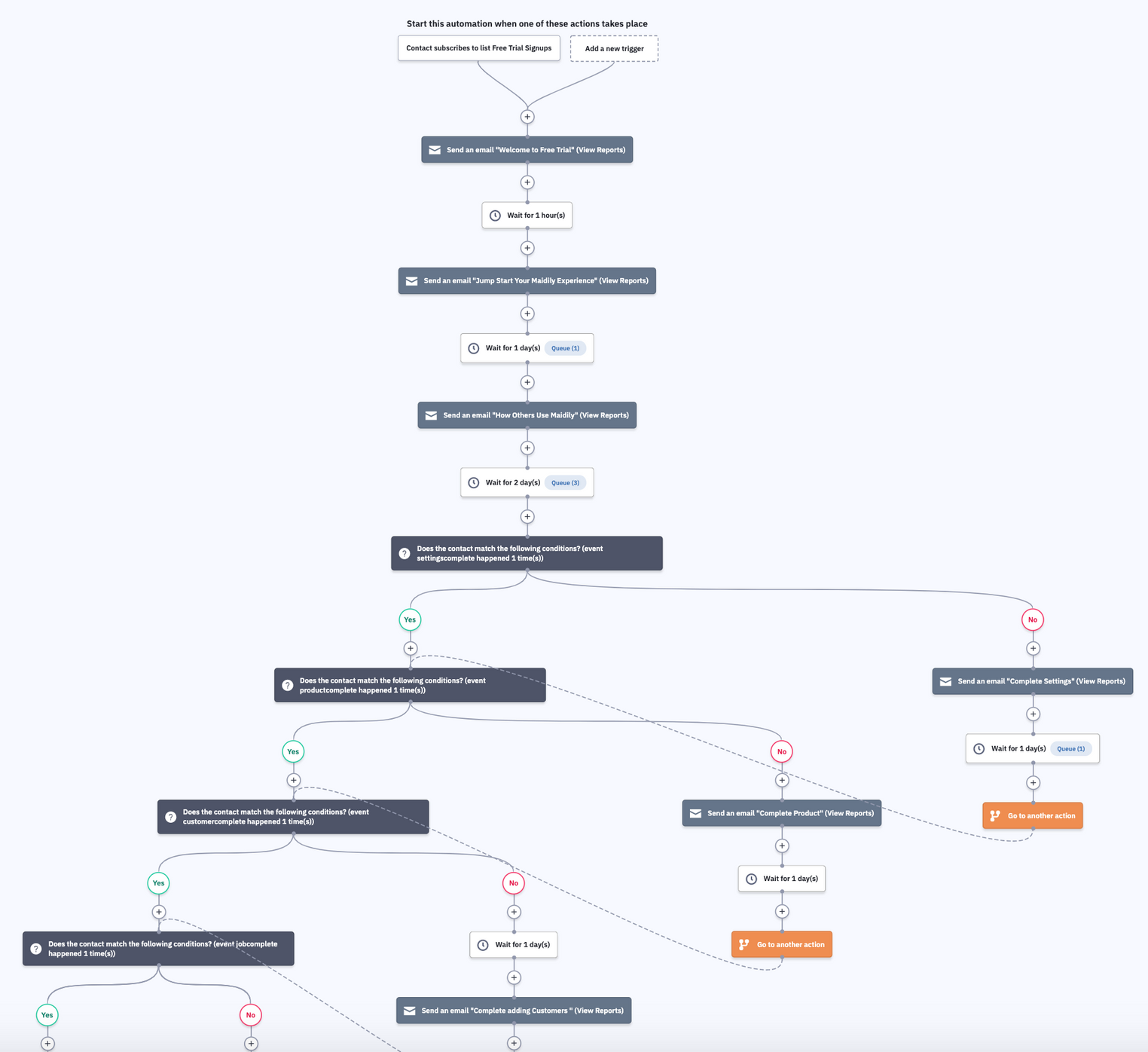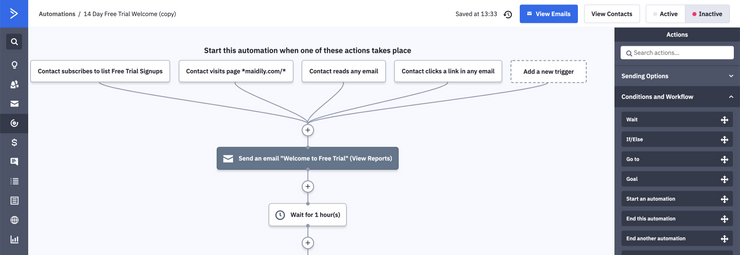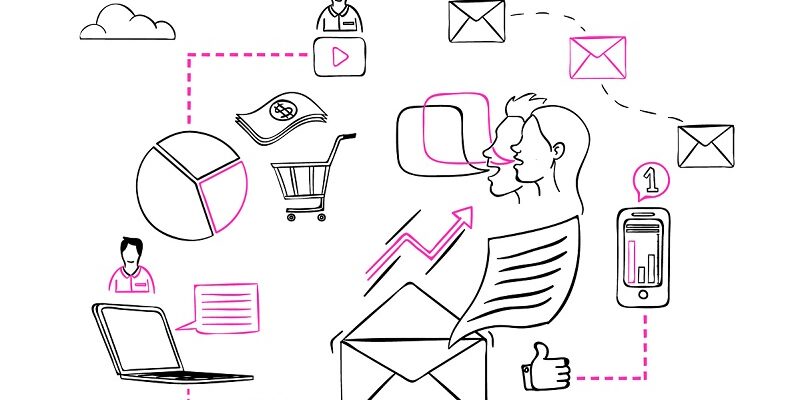With hundreds of options to choose from, it can be hard to decide on an email software that matches your needs at a reasonable cost.
In the course, The 5 Email Marketing Automations Every Business Needs I use Mailchimp to go over the automations I teach but, is Mailchimp the best option? To be honest, it isn’t. Mailchimp is the “gateway service,” a great way to dip your toes into email marketing but, the more you get into email marketing and automation, you’ll soon find out they fall short in a lot of areas.
In this blog, I want to share one of my favorite services for email marketing automation. Why is it one of my favorites? Because when I start working with new clients, the first thing we do is look for the best email service that suits their needs.
We go over what they want to do, the flows they want to set up, and the other marketing tools they use. Active Campaign is always in the top 3 options to choose from.
Active Campaign
I’m a visual person, especially when it comes to automation. Once I have 4 to 5, to maybe 10 automations that work with each other, having an automation map helps me see how they all interact with each other. Active Campaign is really good at visual representations for automations and how they overlap.

Triggers and Conditions
Triggers: These are the actions that start things in automations. You can have triggers that start full automations and triggers throughout an automation. The most common trigger is adding a subscriber to a list. Once a subscriber is added to a list, it can trigger an automation to start.
With Active Campaign, you can actually have multiple triggers that start an automation. For example, you can include multiple lists to start an automation or even better, you can mix and match!
Let me explain…
Let’s say you want to trigger an automation based on any type of engagement a subscriber has with your business, (eg. They are added to a list, they visit your website, open an email, etc).

If any of those previous actions happen, the subscriber will enter your automation.
Goals and Tags can be used as triggers too! You can create goals and tags that trigger as subscribers engage with your business. Goals can be things like a subscriber opening multiple emails or visiting your website ‘X’ amount of times, while tags can be added to your subscribers profile as they purchase certain items or behave a certain way. Eg. if a subscriber is a frequent buyer, you can add a “VIP” tag to that subscriber, to trigger other automations.
Conditions: Are the rules you set along the way to create a personal experience journey for your subscribers. Use conditions to better segment your subscribers. Doing this will allow you to send more personalized emails.
The most common conditions used in automations are previous email engagement.
Eg. Email A is sent to subscribers. Wait for 24h, then check if the subscriber opened or clicked on the email. Based on their behaviour, the subscriber can be sent down a personalized path you create for them in the automation.

Most email marketing services only allow you to set conditions within the same automation. This means, if you sent an email outside of the automation, you won’t be able to use it’s engagement behaviour to set a condition. With Active Campaign, you can use previously sent emails and, previously created automations.
As you create more automations you’ll have personal ways of doing things. Because of Active Campaigns flexibility with triggers and conditions, you can pretty much create any automation you want and, the way you want, with your own personal organizing methods.
CRM (Customer Relationship Management)
If you are using an email marketing service, you also have a CRM, (Customer Relationship Management system). This is just a fancy term to say, “the area where you manage your subscribers, customers, etc.”
Some companies like SalesForce have taken the CRM industry to the next level. The capabilities of what you can do with SalesForce are insane! But do you need all those fancy features?
Another point for Active Campaign is for how they show your subscribers, customers and contacts. They’ve put engagement at the forefront and, come from an email world instead of a data management world, as most CRMs come from.
Everything In One Place

When looking at a contact, you can quickly see their general contact info but, you can also easily see their engagement right away. This engagement is with your emails, website, SMS, everything! Along with all of that, you can quickly see the contacts Tags, Lists they are subscribed too and, Automations they’ve joined.
Active Campaign has seriously done an excellent job at designing a clear subscriber profile page.
A lot of CRM’s have a Marketing side and then a Sales side separate. With Active Campaign, both teams can work under the same roof.
Towards the bottom of the contact profiles, you’ll also see the options to add notes, assign tasks and see customer purchase history.
Conclusion
There are hundreds of email services out there and as I always like to say, choose the one you feel most comfortable with.
I highly recommend Active Campaign as they are one of the most flexible email automation platforms with affordable pricing. (Starts at $15 a month!)
Want to give Active Campaign a try? Signup here to their free trial!
Another one of my favorites is Klaviyo, especially if you are working with an e-commerce store. They have great integrations with the top store providers while also including really powerful features to enhance your e-commerce store. I will be writing a blog about Klaviyo shortly!





